Cambodia: The Food
After our week in Dhaka, we blew through Bangkok again and headed into Cambodia via a van – shuttle – bus – taxi – tuktuk combination. We started with three hot, sweaty, dusty days in Siem Reap, biking, wandering, and climbing around the temples of Angkor Wat, then headed south to Battambang, what felt like a smallish town but is in fact the country’s second biggest city. After that, we slowed down for four days in Phnom Penh before heading into Vietnam, where we are now (I ate bahn mi three times yesterday, friends. It was glorious.)

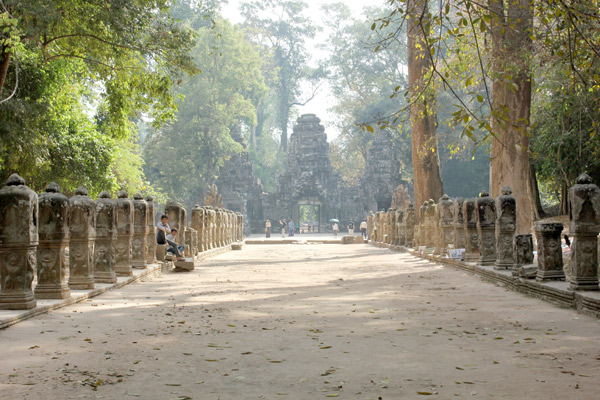
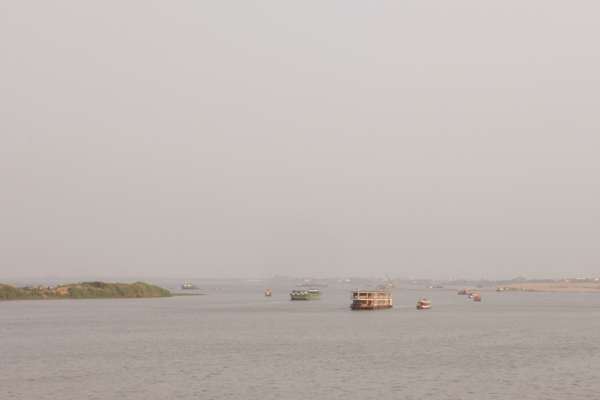
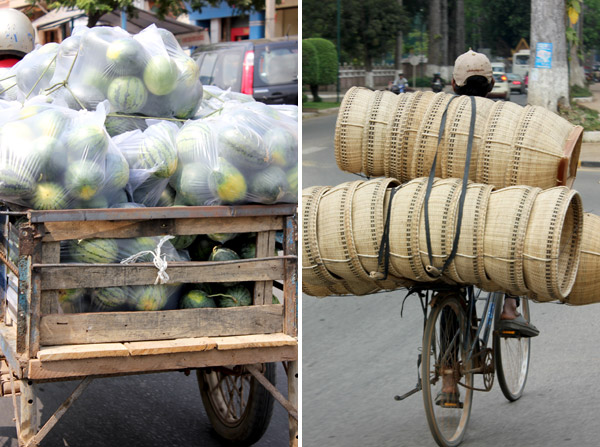
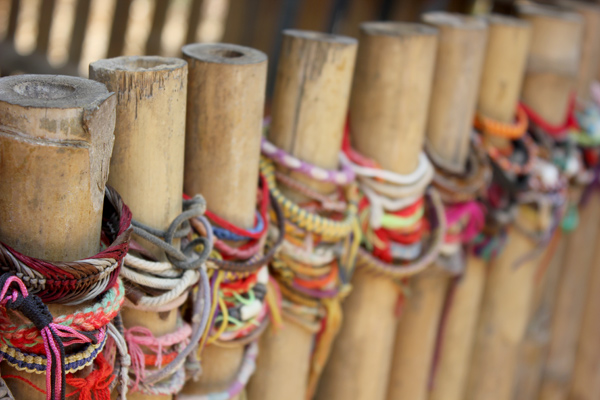
We really loved Cambodia – amazing culture, friendly people, lots of interesting stuff to see and do. You’ll note I didn’t say anything about the food there, but that doesn’t mean it wasn’t good. It just wasn’t … all that notable. In a sea of incredible Southeast Asian cuisine, Cambodian food seemed a little muted and repetitive. My sense is that if we’d have more money to spend, we would’ve had a whole series of spectacular meals, but I don’t know how much they would have resembled what Cambodian people actually eat. Don’t get me wrong – we did eat some really fantastic things, things that I’ve noted down on my lists of top eating experiences and things to bring back into my own kitchen. And maybe we just made poor choices about where and what to eat. But by the end of our time there, I actually took us out of our way to go get Mexican food. In Cambodia. (It actually turned out to be a fairly good Tex Mex-style wet burrito, with freshly fried tortilla chips and everything, but it’s still fairly out of character for me.)
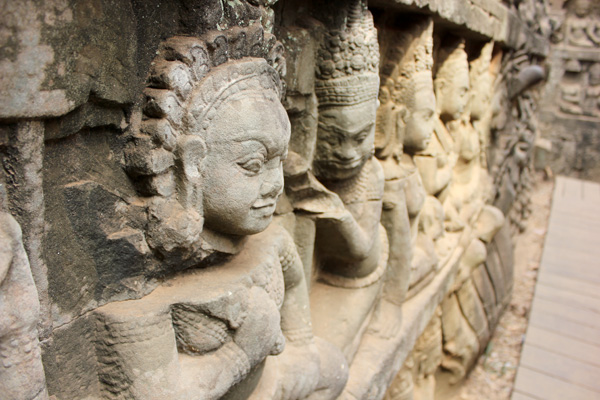
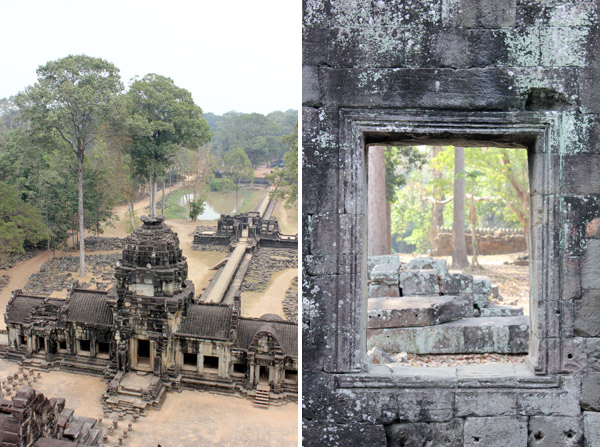
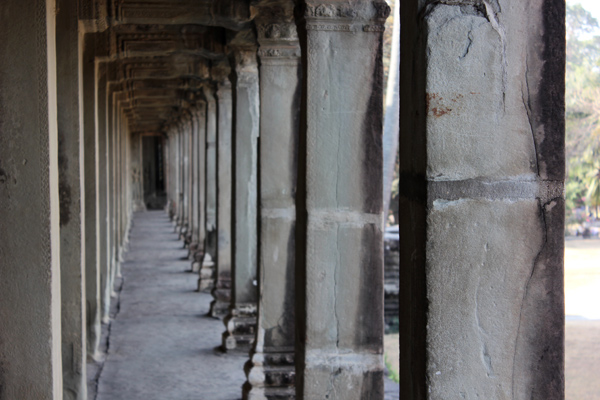
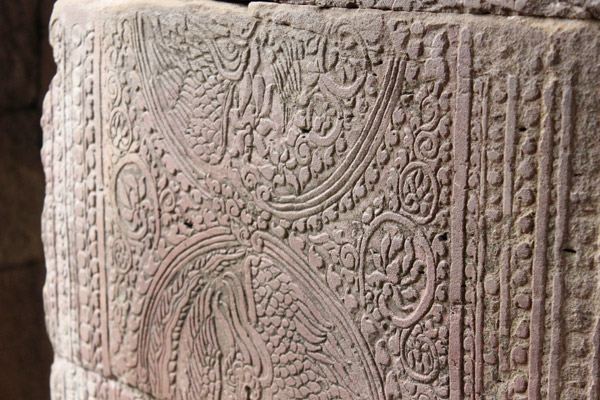
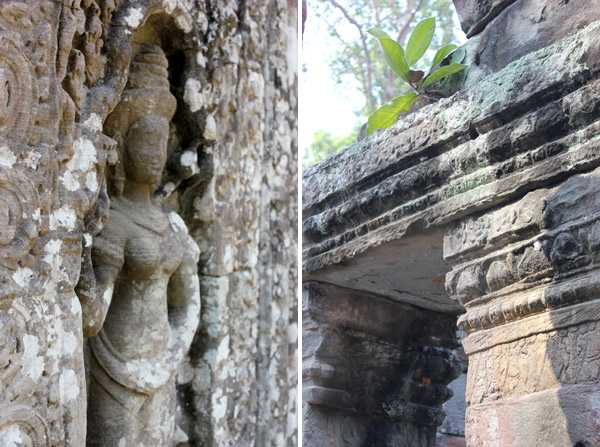
Cambodian food in general seemed fairly similar to Thai, Vietnamese, and Chinese cuisines, depending on from what angle you look at it. Lots of rice, lots of stir-fries dominated by the fish sauce/soy sauce/sugar triad, some fried noodles, lots of curries, always some version of spring rolls and papaya salad, and a decent selection of BBQ restaurants with sweetly-marinated grilled meats. But there are plenty of other specific things to note, as well:
- Unlike Thai food, Cambodian food is not spicy, and decidedly so. They do have a few traditionally spicy dishes and often serve vinegar-soaked chilis (tiny, Thai chili-like peppers they affectionately call “rat shit peppers”) on the table as an accompaniment, but even their bottled chili sauce is big on flavor, very small on spiciness. This was kind of frustrating, and at least twice led me to soak my food in chili sauce to the point that it became the dominant flavor.
- But speaking of chili sauce, many things did come with a small dish of an amazingly perfect sweet and sour chili garlic sauce, a thin dipping sauce-like consistency made of fish sauce, sugar, red chilis, and garlic. Whenever we got it, we used it all.
- Most of the produce we saw was familiar to us, but some was entirely unheard of. Morning glory (a plant in the same family as the flower, otherwise known as “water spinach”) was a common green for stir-fries, one night we ate tiny green eggplants the size of large chickpeas, and another time we started our meal with a banana flower salad. Wandering through the markets we spied fruits and vegetables of all sorts that we had no idea how to identify, much less eat.
- Amok, a delicious coconut milk-based “dry curry” traditionally made with fish, is a fairly ubiquitous dish on menus. “Dry curry” means a far thicker sauce in far less volume, as opposed to other curries, served soupy and in a bowl. Traditionally it was always made with fish and steamed or roasted in a bowl made from a banana leaf, forming a thick, pasty curry as the liquid cooked off. These days it’s available with chicken, beef, or tofu, or other proteins, and is often made in a wok like other curries, left to bubble on the stove while the coconut milk cooks down into a thick sauce with a slightly curdled texture.
- Khmer curries in general (the soupier ones) we found to be fantastic. They were creamy like Thai curries but with the warmth and depth of Indian ones, and usually contained pumpkin and yam (and chopped up peanuts, if we were lucky).
- Lok lak is a common type of beef stir fry, though menus differed heavily on what exactly it meant. Some were served with french fries instead of rice and said that that was traditional, some with egg on top and said that that was traditional, some with raw salad vegetables like lettuce, tomato, and cucumber, and said that that was the most traditional. So who really knows? But at its most basic, it’s a stir fry of beef with a sauce including black pepper, garlic, tomato sauce (often ketchup, especially in restaurants), soy sauce, and fish sauce.
- Oh, Kampot pepper. I’ve always been a fan of black pepper, especially once I moved from the tinned ground stuff to using a pepper grinder, but now that I’ve seen the world of Kampot pepper, I might never be able to go back. Kampot is a region in Cambodia famous for its pepper, and while we didn’t go there we were able to eat it in a variety of ways. On our second night in Siem Reap we ordered a chicken stir fry made with long strands of the fresh green peppercorns (not dried), and the flavor was like a revelation. Every bite was infused with a slowly-growing, floral, citrusy pepper flavor, like all the best parts of black pepper without any of the acidity or staleness or kickback that it sometimes has. It was obvious that the pepper – whether green, black, red, or white – was everywhere in the food, sometimes more dominantly than others, and I loved it. One night we ordered barbequed pork ribs and alongside the sweet, palm sugar-lacquered meat was a small dish of a sauce made entirely of ground black pepper and lime juice. Simple, but packed with flavor and right to the point. I loved it. Unfortunately the green pepper flavor is kind of unexportable since it requires the fresh, undried, unripened green pepper berries, but I did buy a 250g sack of black peppercorns at the market for about $2.
- We didn’t eat as much street food as we perhaps should have, but we did have a few really great experiences. They appear to be very fond of skewers of … well, it’s not really clear what kind of food product is actually on the skewers. Some are definitely fish balls, and some seem to look like bits of hot dog, but I’m really not sure what the Angry Bird-shaped ones were, or the bright green ones, or most of the rest of them. But they love them, deep-fried and often served with hunks of baguette and chili sauce. My shrimp intolerance limited me to a few timid bites, but Brett tried 3 or 4 different kinds of them. At the Phnom Penh night market, we also fell in love with Panko-breaded fried chicken drumsticks with chili sauce and plates of thick noodles fried with greens and topped with shredded chicken and roasted peanuts. (We fell enough in love with those two things, in fact, that we had them for dinner two nights in a row on our last two nights in the country.)
- Twice we ate something similar to our noodles at the night market, both times called simply “Khmer noodles.” It consisted of a large bowl of undressed cooked noodles topped with things like dried shrimp or cooked meat, a huge pile of lettuce, herbs and bean sprouts, and a healthy handful of chopped peanuts, served alongside a smaller bowl of sauce. We couldn’t tell exactly what the sauce was, but I’m going to go out on a very secure limb here and say it included fish sauce, lime juice, sugar, and soy sauce, among other things.
- One street food we definitely, definitely didn’t eat was clams. Everywhere we went, vendors with wooden carts sold mounds of tiny clams, seemingly tossed with some sort of herb-chili mixture. Brett came to call them “the shits in a shell” (note: not “shit in a shell” … “the shits in a shell”), and it became my primary goal to get a good picture of them. I didn’t do very well, but I’m including below one of my better mediocre shots.
- Coffee and tea with condensed milk began showing up more and more the farther east we moved toward Vietnam, and I was pleased to see it. Iced coffee with condensed milk became an every-few-days treat while we were in Cambodia – as time has gone on it has turned into an everyday necessity, but that’s not important.
- Beer: Light, fizzy, cold. Cambodia, Angkor, Anchor (which they pronounce “An – chore” to differentiate), and some others I can’t really remember. Pilsner, pilsner, pilsner. And more pilsner.
- (But also – some booze was strangely cheap and we now have a 1 liter bottle of Bombay Sapphire in our possession, for which we spent $11. It is a treasure!)
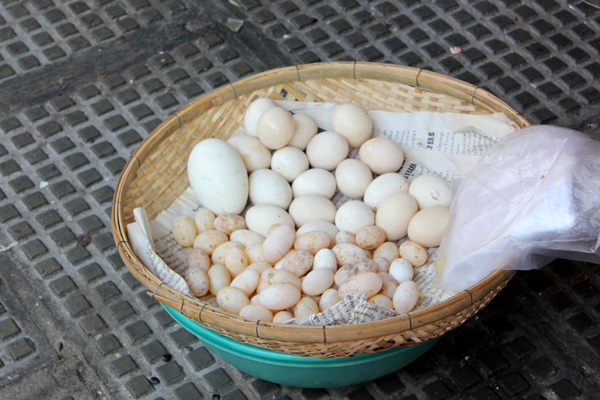
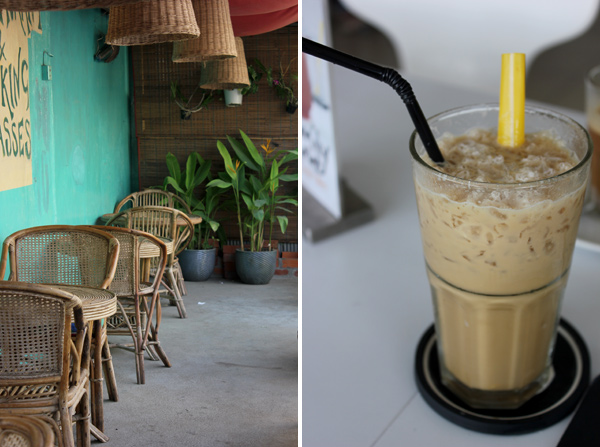

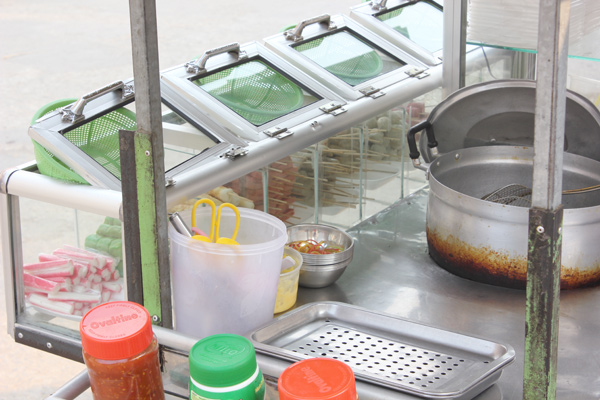
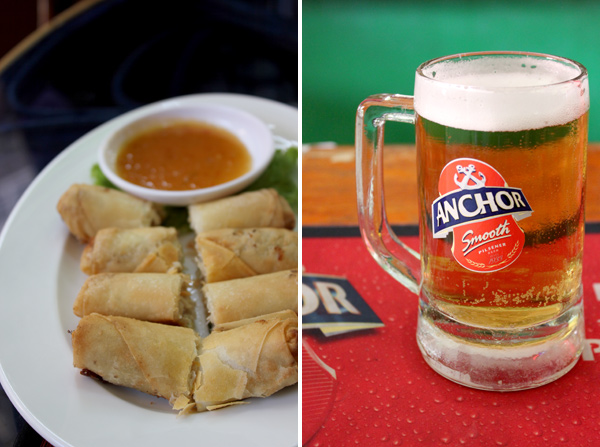
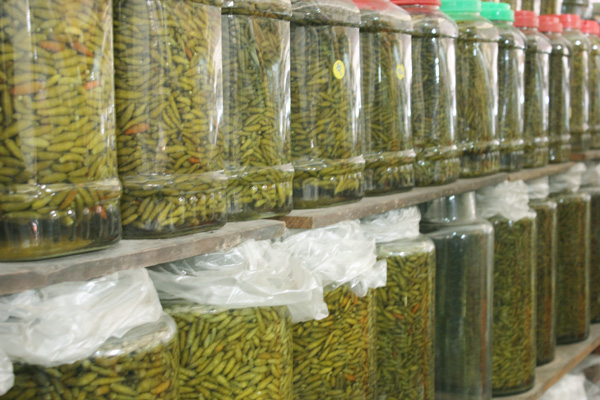
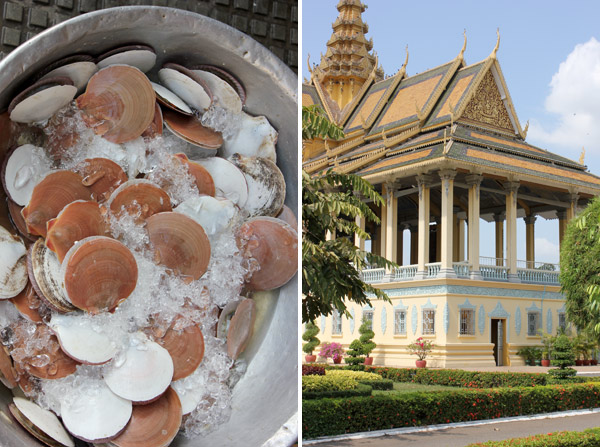
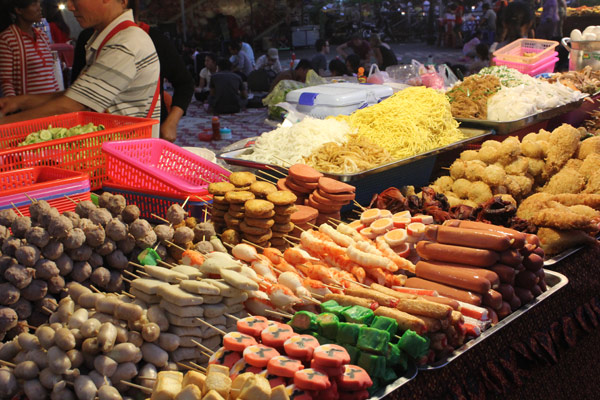
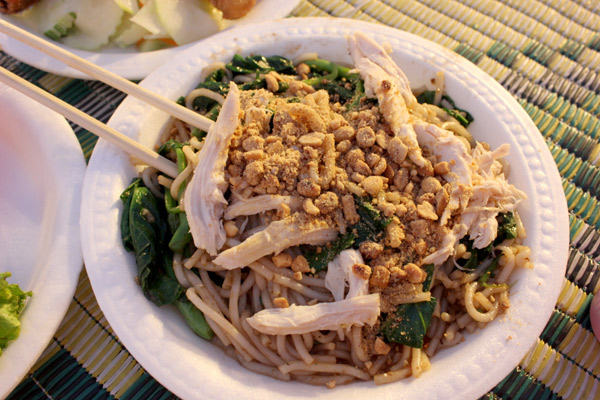
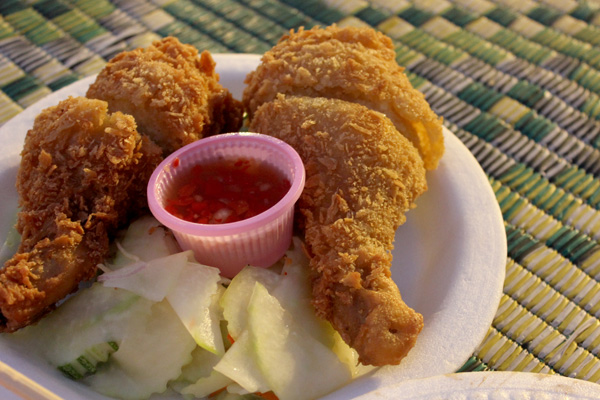
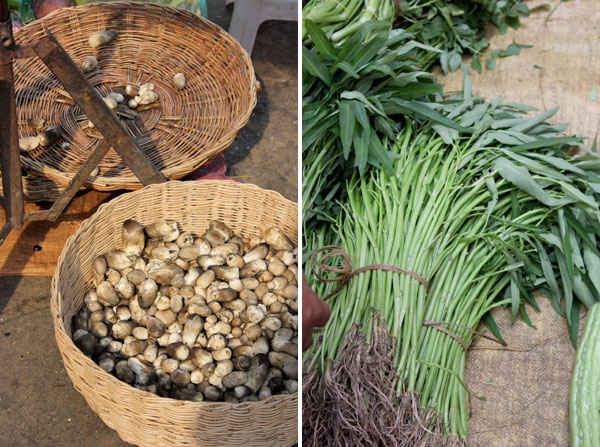
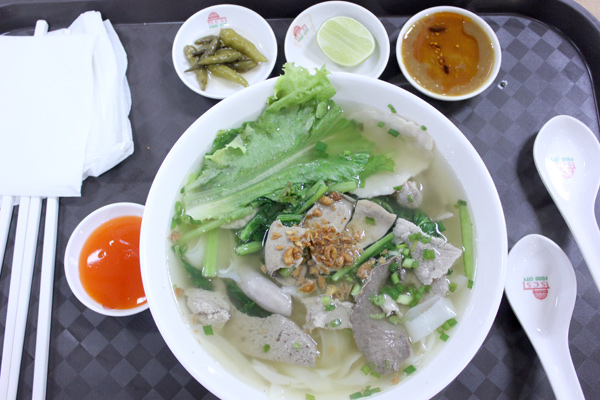
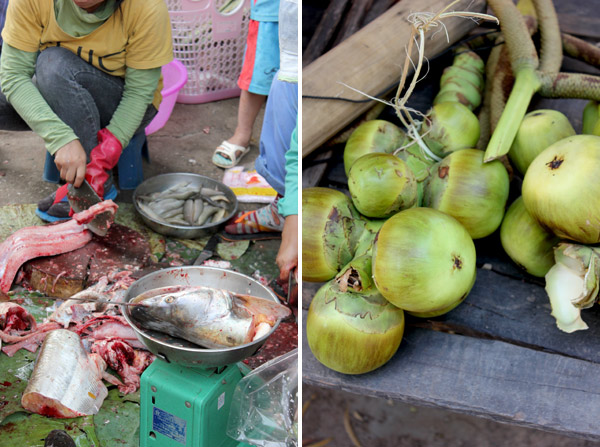

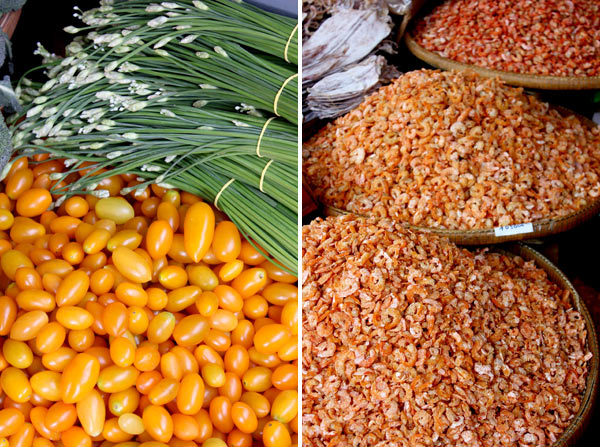
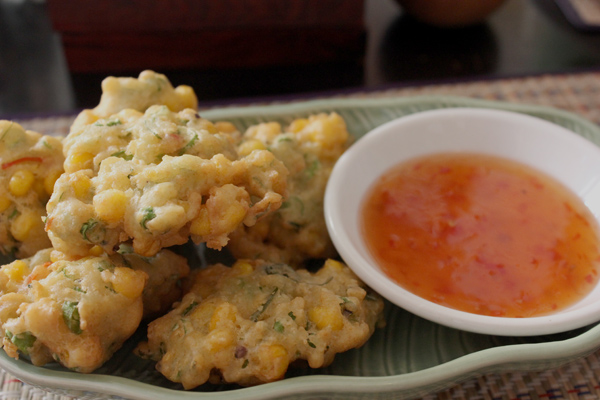
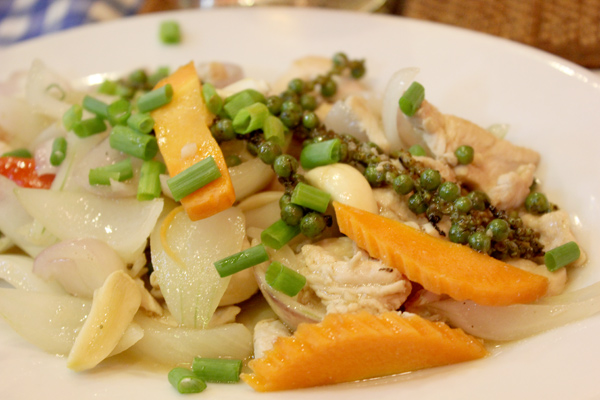
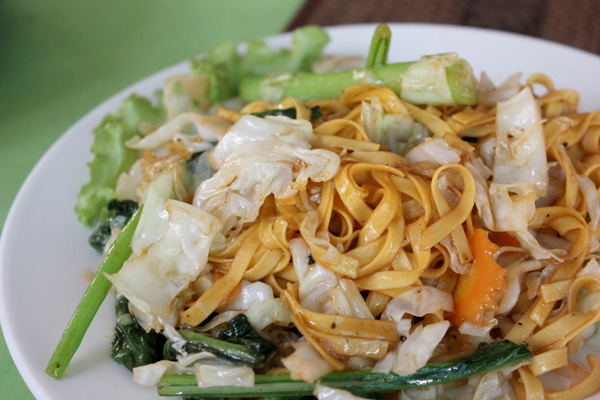
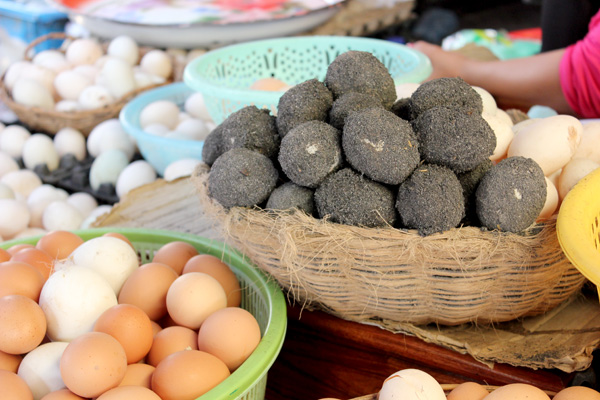
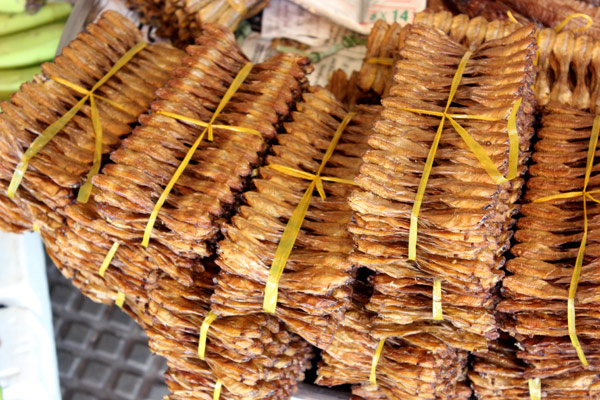
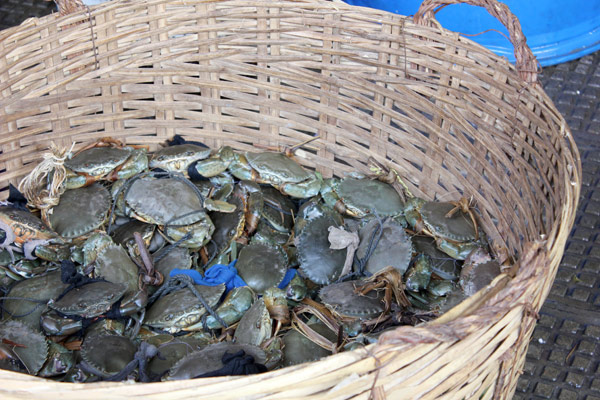
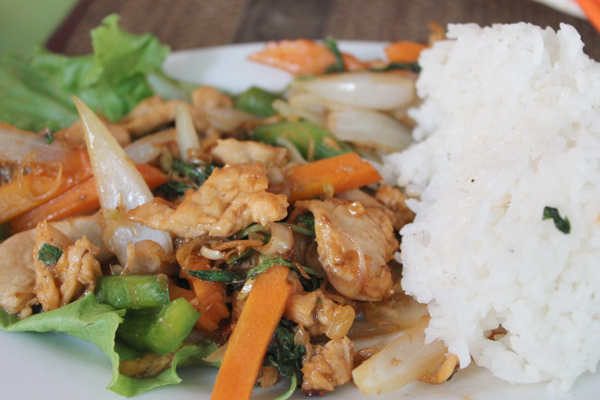
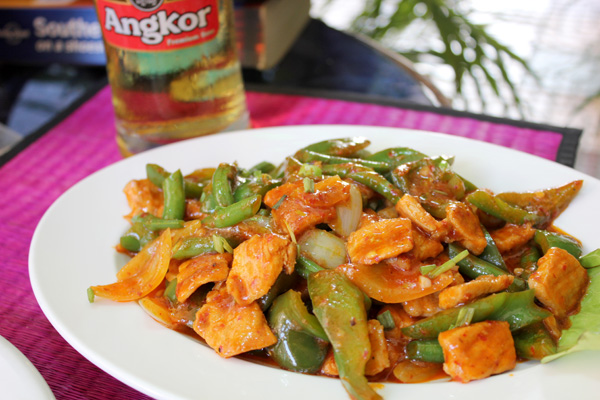
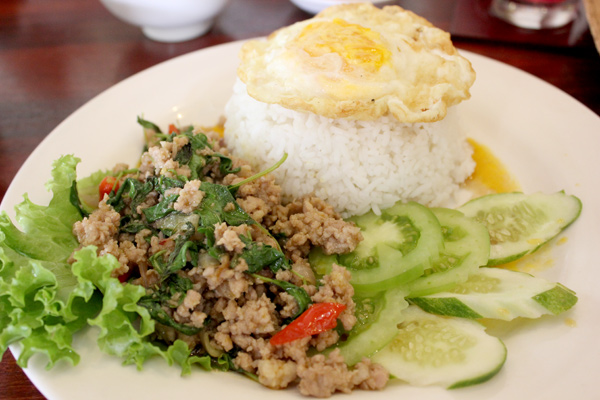
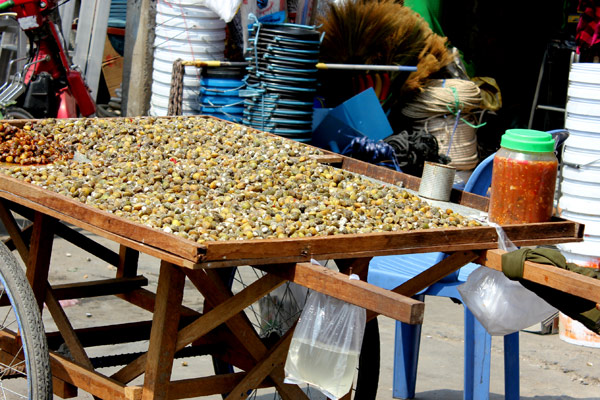





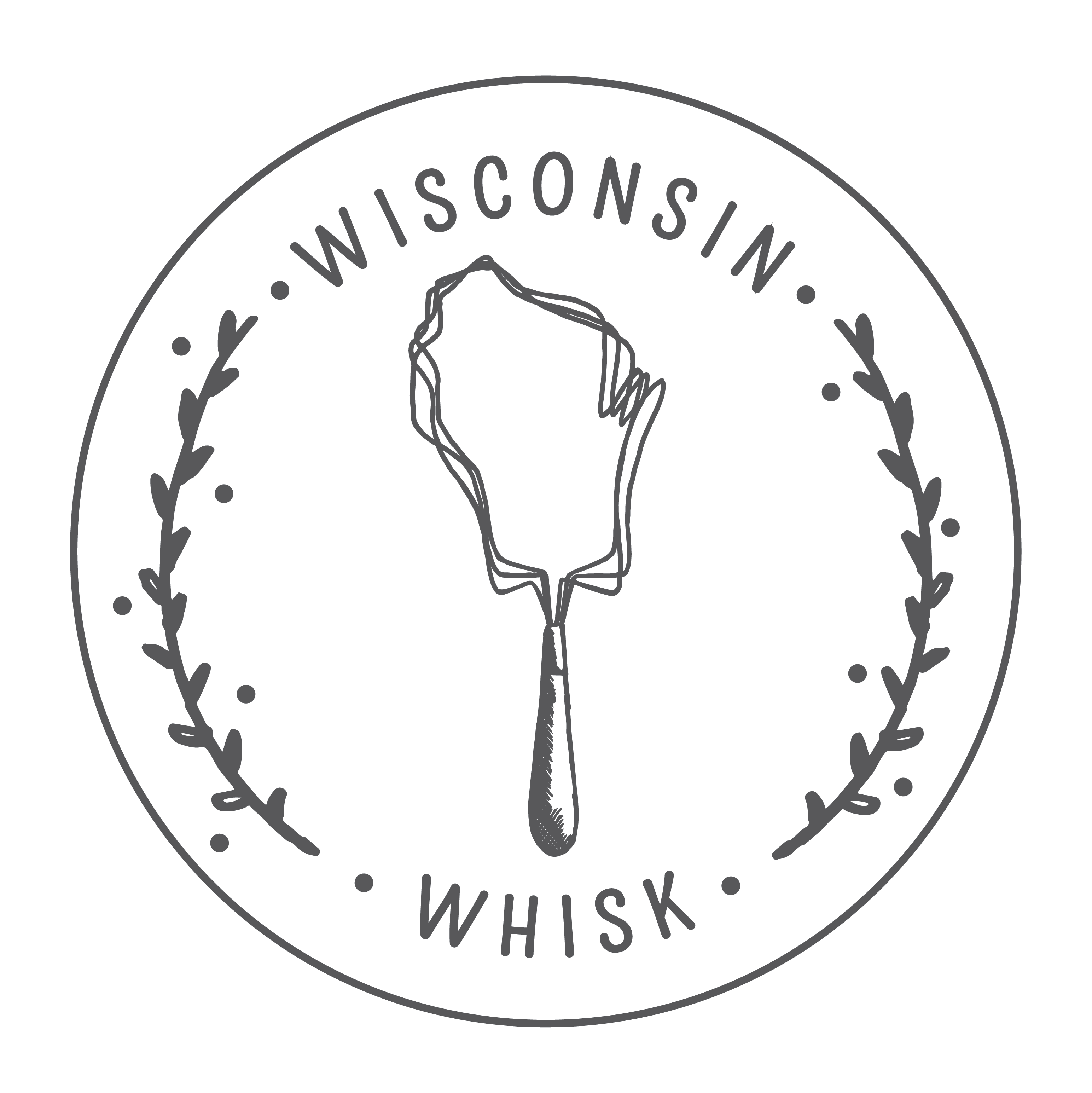


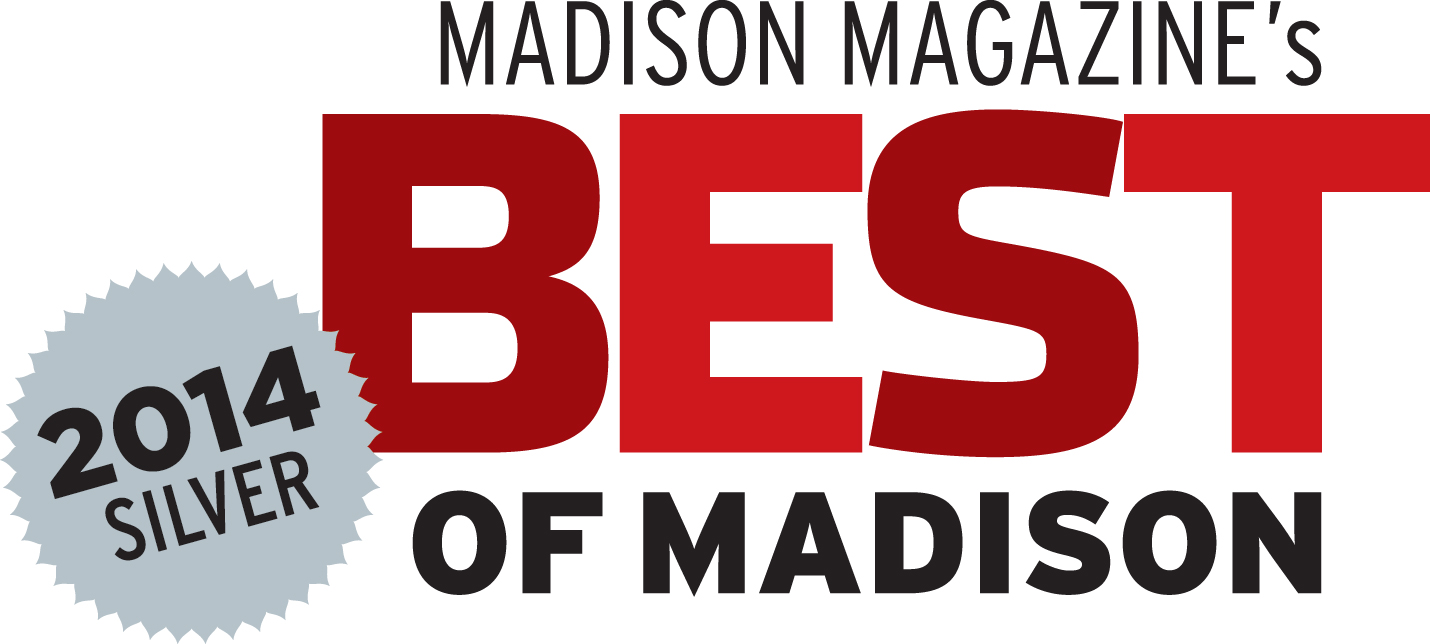
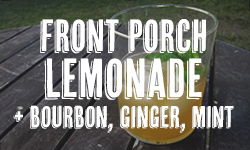
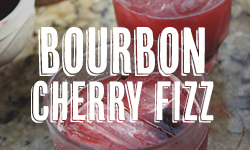
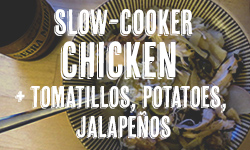
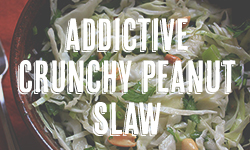
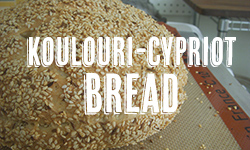
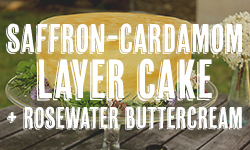

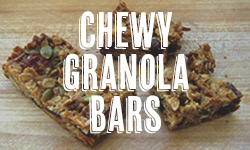
amazing pictures 🙂
Thank you!